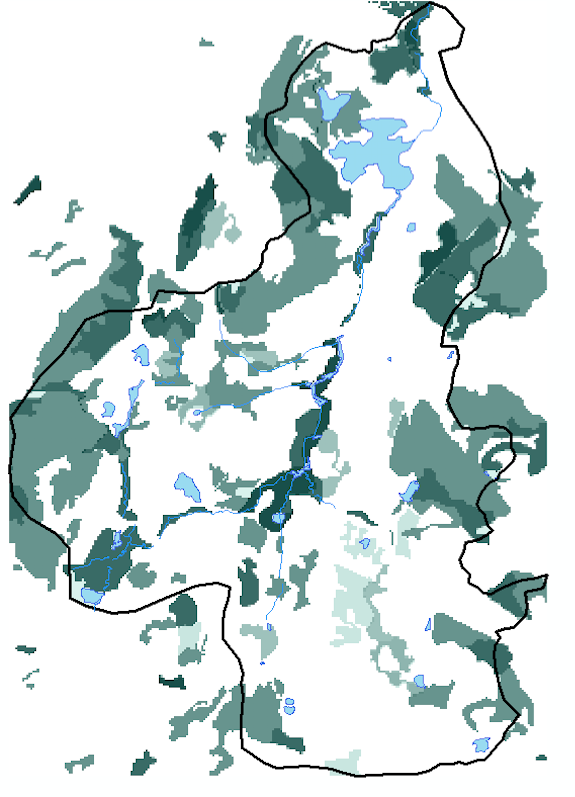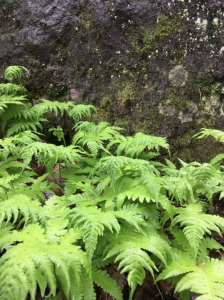Property owners in the area have many options when it comes to protecting the environment while reaping financial benefits. It is called “voluntary conservation.” This gives owners a way to initiate the conservation and enhancement of natural features on their properties. Owners are thus giving a real gift to the community. They are taking responsibility to protect the environment for everyone’s benefit.
In order to attain its conservation goals, RJANP wants to implement limited actions, each of which considers the significant variety in land use and the diversity of local stakeholders’ concerns.
Éco-corridors laurentiens published a information guide on voluntary conservation options in 2023. MORE INFO HERE (in French only)! And here in PDF (in French only)!
The main areas of intervention for these activities include the following:
- Voluntary conservation and stewardship on private land;
- Municipal environment, public stewardship and land use;
- Home and cottage development;
- Forest environment and forest management;
- Enhancement of the natural environment.
According to the ministère de l’Environnement du Québec, the main legal voluntary conservation options available to private property owners are nature reserves, conservation easements and the donation or sale of the property. Other options include designating a plant habitat or, quite simply, signing a moral voluntary conservation agreement in the form of a declaration of intent. The common thread in all of these options is the preservation of the properties’ natural features, irrespective of whether the owners keep the ownership titles. If only a small number of these options are implemented by property owners, we could form the equivalent of a greenbelt or ecological corridor in the region. This is what RJANP wants to foster for the benefit of all the community since its foundation.
Declaration of intent
A declaration of intent is an owner’s moral commitment and consists solely in a gentleman’s agreement; it is often the first step in potential conservation options in Quebec’s legal context. Here, owners express their desire to preserve the natural features of their properties, in keeping with a conservation vision like that of RJANP.
Various voluntary conservation tools
Owners who legally protect their land often get income tax breaks or municipal and school tax exemptions (depending on the option chosen). In some cases, they may also obtain financial assistance to cover part of the expenses associated with protecting a property.
Here are some of the options:
- Establishment of a natural reserve on private property;
- Establishment of a conservation easement or non-building servitude;
- Establishment of a social trust;
- Donation to a conservation organization for the full or partial value of the land;
- Sale of the land to a conservation organization;
- Management or enhancement agreement (with a conservation organization);
- Donation of the full or partial value of a conservation easement to a conservation organization;
- Sale of the full value of a conservation easement to a conservation organization.
Points of interest in the watershed
The summary and general ecological characterizations done in summer 2014 made it possible to study the environmental characteristics of the Ruisseau Jackson watershed and identify many points of interest.
The natural environment’s points of interest were all taken into account in the analysis of the Ruisseau Jackson watershed in order to identify areas with strong conservation potential. To this end, the analysis considered the following:
- Wetlands (ponds, marshes, swamps and peat bogs);
- Potentially old-growth forests;
- Potentially rare forests;
- Potential forest habitats for threatened or highly vulnerable plants;
- Maple stands with other tolerant hardwoods;
- Large tracts of coniferous stands.
The following image from RJANP’s conservation plan shows the degree of importance of the lands in terms of environmental protection.
Land holdings of interest for conservation
 The cadastral plan of properties in the Ruisseau Jackson watershed will help identify land holdings of interest for conservation, according to the high-potential areas identified.
The cadastral plan of properties in the Ruisseau Jackson watershed will help identify land holdings of interest for conservation, according to the high-potential areas identified.
The majority of the properties are under 5,000 square meters (59.5%). These properties are located along existing roads, mostly in areas impacted by residential construction developments. Around 5% of the properties measure more than 10 hectares. Many large properties are in the central areas of the watershed, near Ruisseau Jackson. These are the properties of greatest interest for the conservation plan.
To identify the land holdings of interest for conservation, just superimpose the priority natural environment components identified in the previous section over the joint cadastral plan for the three municipalities concerned. A “higher-priority” property for conservation encompasses a greater number of ecologically significant components. It goes without saying that larger properties will have greater priority because they potentially contain more components of interest for conservation.
Defining “conservation”
In line with the initiative’s vision, the conservation of natural environments can be defined as their preservation, protection and management in a manner that meets human needs to ensure community health and enjoyment.
With this in mind, RJANP’s specific conservation actions encompass three main principles:
- Protection of natural environments: Actions that preserve environments in their natural state by implementing conservation options through land acquisitions, stewardship agreements or protection status.
- Enhancement of natural environments: Actions that enhance and enrich the ecological value of natural environments through informational, educational, awareness, recreational, interpretive and research activities, thus lending them social value.
- Sustainable use: Actions for managing or using environments, taking environmental issues into account, in order to maintain the integrity of the environment, respect the carrying capacity of ecosystems and preserve specific ecological features.

Ruisseau Jackson… Natural filter — Biodiversity — Collective identity
